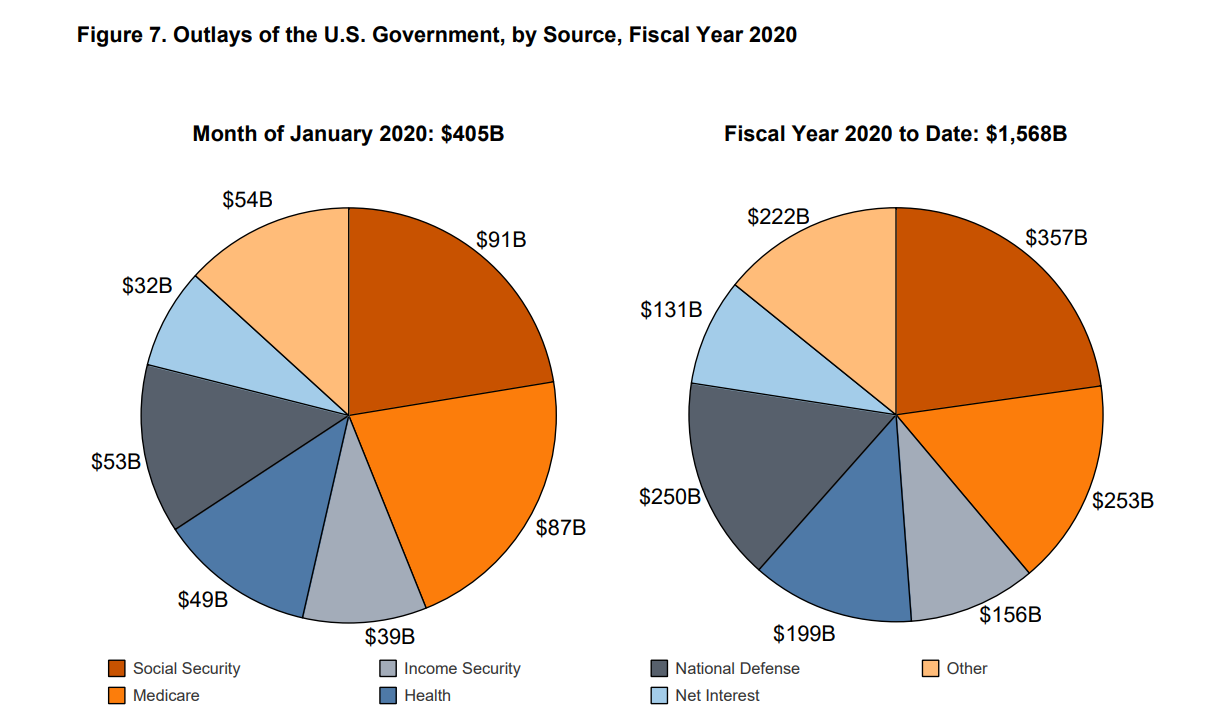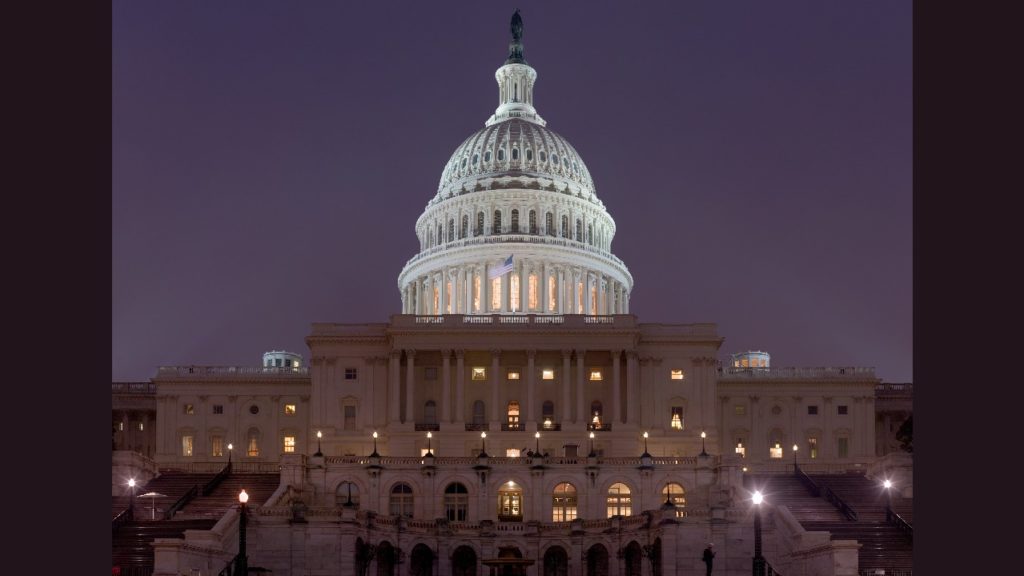US Government Kicks Off 2020 With Another Big Deficit
The US government posted another massive deficit to start out calendar-year 2020.
According to the latest data released by the US Treasury Department, Uncle Sam spent $32.6 billion more than it took in last month. That compares with an $8.7 billion surplus in January 2019. Analysts had projected an $11.5 billion shortfall in January.
That brings the total deficit in FY2020 to $389.2 billion. So far, the deficit in fiscal 2020 is about $79 billion bigger than it was at this point in FY2019.
According to the Congressional Budget Office, the federal budget shortfall will hit $1.02 trillion in FY 2020 and rise into the foreseeable future. The CBO warns that the ballooning national debt poses a “significant risk” to the economy and financial system.
Overspending continues to drive the ever-widening deficits. The federal government took in $372 billion in January. That was a 10% increase in revenue compared with January 2019. But spending was up $405 billion. That represents a 22% increase year-on-year.
So far in FY2020, the federal government has already spent nearly $1.5 trillion.

These are the kind of budget deficits one would expect to see during a major economic downturn. The federal government has only run deficits over $1 trillion in four fiscal years, all during the Great Recession. We’re approaching that number today, despite having what Trump keeps calling “the greatest economy in the history of America.”
Generally, during economic expansions, government spending on social programs shrinks and tax revenues climb with increased economic activity. Revenues have increased over the last year, even with the Republican tax cuts, but they haven’t kept pace with the increase in government spending.
President Trump didn’t even mention the growing national debt during his State of the Union address. As Peter Schiff noted in a tweet, “During his 90-minute #SOTU address President Trump did not urge Congress to cut one dime of government spending, or eliminate one government agency or department, even as the national debt is soaring by record amounts during an economy he claims is booming.”
Much has been made in cuts to social programs in Trump’s proposed 2021 budget. But there are spending increases in other areas and the overall spending plan comes in at $4.8 trillion compared to $4.4 trillion in actual outlays during FY2019.
Republicans argue that economic growth will ultimately fix the national debt. The Trump plan claims to balance the budget in 15 years. But this scenario depends on 3% GDP growth every year and no recession. Last year, GDP growth was 2.3%.
The CBO warns that the growing “debt would dampen economic output over time.”
In fact, studies have shown that GDP growth decreases by an average of about 30% when government debt exceeds 90% of an economy. US debt already stands at around 106.9% of GDP. Ever since the US national debt exceeded 90% of GDP in 2010, inflation-adjusted average GDP growth has been 33% below the average from 1960–2009, a period that included eight recessions.
Europe’s spending binge serves as a prime example of the impact of debt on economic growth.
The reality is America’s fiscal condition is circling the drain. The bottom line is that the spending trajectory is unsustainable. If the US government is running $1 trillion deficits now, what will the country’s financial situation look like when the next recession hits?





 Since Nayib Bukele became president of El Salvador, El Salvador has been in American media and global political discussion more than ever. While much of the attention focuses on Bukele’s mass incarceration of gang members and a decline in homicide of over 70%, Bukele has also drawn attention to his favoritism towards Bitcoin and how he […]
Since Nayib Bukele became president of El Salvador, El Salvador has been in American media and global political discussion more than ever. While much of the attention focuses on Bukele’s mass incarceration of gang members and a decline in homicide of over 70%, Bukele has also drawn attention to his favoritism towards Bitcoin and how he […] With gold hitting yet another awe-inspiring all-time high in the wake of Powell’s remarks reassuring markets (more or less) to expect rate cuts in 2024, a few analysts are pointing out risk factors for a correction — so is there really still room to run?
With gold hitting yet another awe-inspiring all-time high in the wake of Powell’s remarks reassuring markets (more or less) to expect rate cuts in 2024, a few analysts are pointing out risk factors for a correction — so is there really still room to run? Gold hit a new all-time nominal high, surpassing the previous record set in December of the previous year. The precious metal’s price reached approximately $2,140, indicating a robust and continuing interest in gold as a safe-haven asset, despite a rather peculiar lack of fanfare from the media and retail investors. This latest peak in gold […]
Gold hit a new all-time nominal high, surpassing the previous record set in December of the previous year. The precious metal’s price reached approximately $2,140, indicating a robust and continuing interest in gold as a safe-haven asset, despite a rather peculiar lack of fanfare from the media and retail investors. This latest peak in gold […] The gold price has been surging, with unprecedented central bank demand gobbling up supply. It has been a force to behold — especially as US monetary policy has been relatively tight since 2022, and 10-year Treasury yields have rocketed up, which generally puts firm downward pressure on gold against USD.
The gold price has been surging, with unprecedented central bank demand gobbling up supply. It has been a force to behold — especially as US monetary policy has been relatively tight since 2022, and 10-year Treasury yields have rocketed up, which generally puts firm downward pressure on gold against USD.  Total gold demand hit an all-time high in 2023, according to a recent report released by the World Gold Council. Last week, the World Gold Council (WGC) released its Gold Demand Trends report, which tracks developments in the demand for and use of gold around the world. Excluding over-the-counter (OTC) trade, 2023 gold demand fell slightly from 2022 […]
Total gold demand hit an all-time high in 2023, according to a recent report released by the World Gold Council. Last week, the World Gold Council (WGC) released its Gold Demand Trends report, which tracks developments in the demand for and use of gold around the world. Excluding over-the-counter (OTC) trade, 2023 gold demand fell slightly from 2022 […]